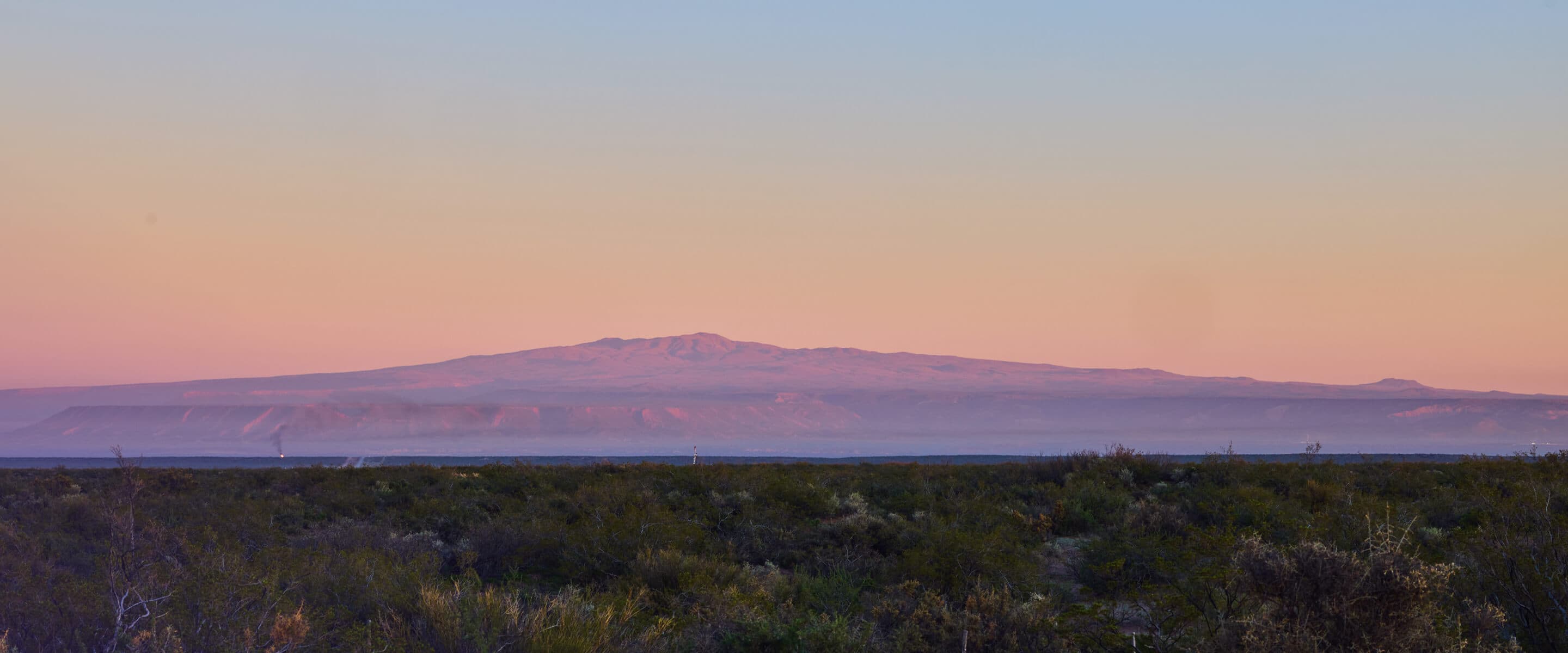
We are committed to responsible energy production. We work to minimize our environmental footprint while maximizing operational efficiency. Our approach combines emissions reduction, nature-based solutions, responsible water and waste management, and biodiversity protection.

GHG emissions intensity scope 1 and 22 (kgC02e/boe)

1 Reduction achievements and targets in the charts above measured with respect to 2020, our baseline year (year of our carbon inventory).
2 Intensity metrics were calculated based on gross production until 2023 and are based on total production as of 2024. For reference, scope 1 and 2 GHG emissions intensity for 2024 based on gross production is 8.6 kgCO2e/boe. Gross production and total production definitions, as well as historical data for both, can be found in the Sustainability Report.
Since 2021 we have endorsed the World Bank’s “Zero Routine Flaring by 2030” initiative. In line with this commitment, we design new facilities to meet zero routine flaring requirements. We also monitor and revamp existing facilities and processes to avoid routine flaring.
We are continuously working to reduce methane emissions as part of our broader climate strategy. To that end, we have implemented and strengthened our Leak Detection and Repair (LDAR) program, integrating both bottom-up and top-down detection technologies. Our approach includes Optical Gas Imaging (OGI) campaigns and aerial surveys, allowing us to identify and address emission sources more accurately and efficiently.
We monitor and manage emissions to protect air quality for the benefit of our workforce, the environment, and the communities where we operate. Our operation has controls and procedures in place to manage emissions and ensure compliance with regulatory requirements.

At Vista, we continuously optimize our operations to improve energy efficiency, reduce energy consumption, and lower our carbon footprint. Central to our strategy is our plan to electrify our operations and to increasingly source it from renewable energy.
We are actively contributing to carbon removal and avoidance by developing nature-based projects through Aike, our subsidiary, which designs, develops, and manages these initiatives.
This effort supports the management of our hard-to-abate GHG emissions. According to our objective, we will have generated enough carbon credits to match our residual scope 1 and 2 GHG emissions by 2026.
1
Mixed Afforestation with native and exotic species
2
Improved Forest Management
3
Forest Conservation
4
Mixed reforestation with native and exotic species
5
6
Regenerative livestock
7
8
9
10
Regenerative Agriculture & Livestock

Aike, our NBS subsidiary, is led by top local experts and designs, develops and manages high-quality carbon removal and avoidance projects for Vista.
As shale oil producers, we recognize the critical role water plays in our operations and prioritize its careful management. By minimizing freshwater usage, we aim to preserve ecosystems and biodiversity in the areas where we source water.
Our goal is to sustainably manage water resources, ensuring their availability for the future while supporting the continuity of our business.
Reduction of water consumption across all stages of the production process
Reutilization of produced water
Optimization of monitoring systems
Enhancement of effluent quality

We take full responsibility for the waste generated across all stages of our operations and actively collaborate with suppliers to implement the best practices and technology.
We manage hazardous and nonhazardous waste in compliance with all applicable standards and regulations. Our processes ensure total segregation at the source, enabling the most appropriate treatment and disposal. We also monitor each stage from segregation and transportation to recycling, treatment, and final disposal, ensuring full traceability. This approach allows us to optimize efficiency while minimizing waste volume and environmental impact.
Minimize waste volume and hazardousness at the source by enhancing processes and materials
Reuse materials whenever feasible
Recycle materials to mitigate or eliminate hazardousness, and reuse treated waste by-products whenever possible
Dispose materials in accordance with methodologies compliant with regulation, such as incineration or landfilling
The goal of our biodiversity management plan in the areas where we operate is to provide a methodological framework to monitor and restore the biological ecosystem and biodiversity through preservation and restoration programs. Vista implements innovative, cost-effective and collaborative solutions to safeguard and restore biodiversity.
We are committed to habitat restoration and the recovery of degraded areas. We focus on the scientific collection of seeds, cultivation of native seedlings, creation of microhabitats for fauna, and the environmental restoration of abandoned or rehabilitation sites.
Our preservation approach starts with biodiversity baseline assessments through local flora, fauna, archaeological, and paleontological surveys. This information is used to define management and monitoring plans. We track biodiversity annually to detect disturbances and report restoration progress, ensuring data-driven insights.

We acknowledge that spill incidents pose significant environmental risks associated with our operations. We actively manage, assess, and enhance preventive measures and controls. Additionally, we have an incident-response contingency plan in place to ensure swift responses to primary containment events and minimize impact.
Contact us to learn more or share your questions about our work with local communities.